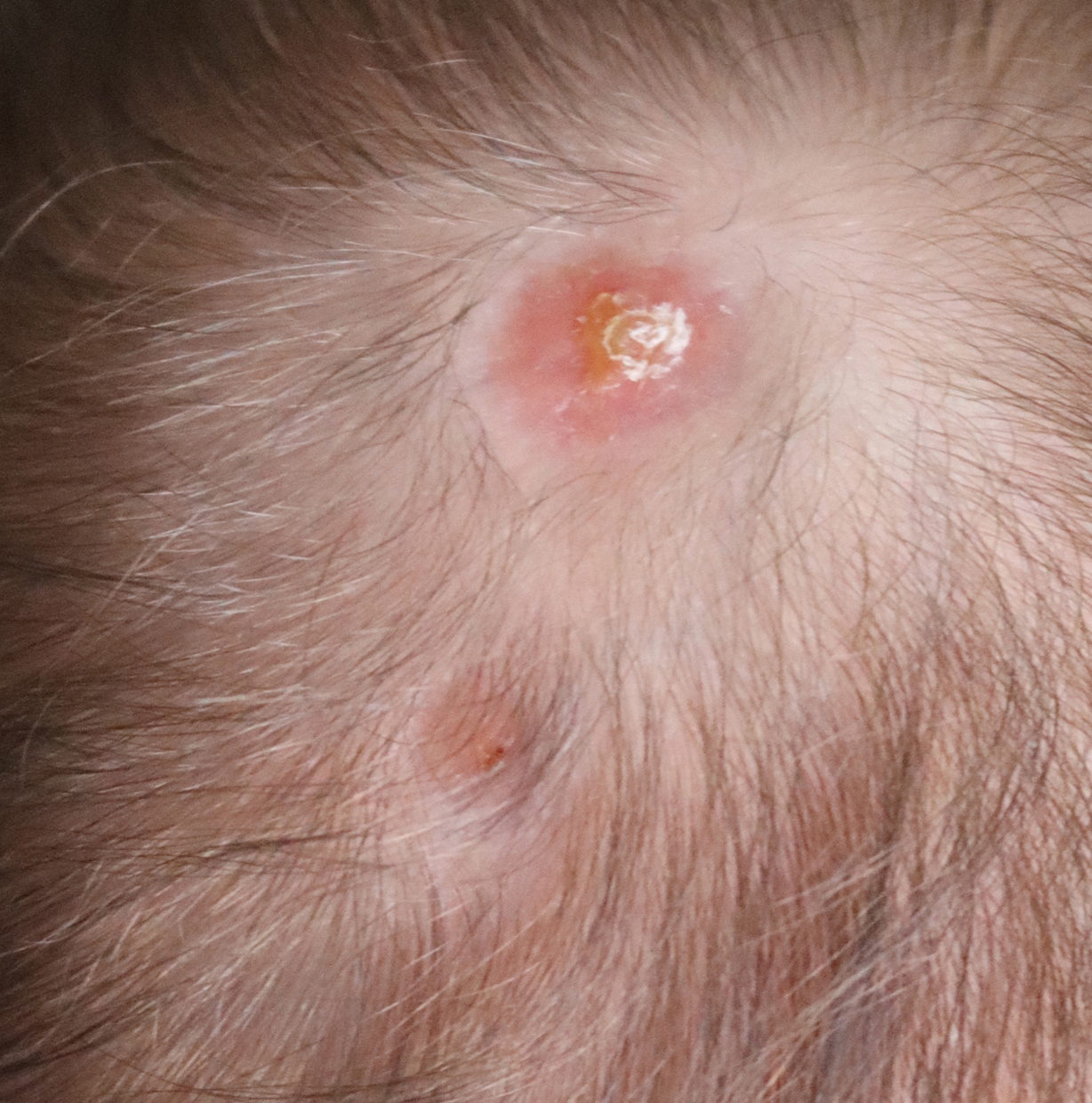Aplasia cutis congenita in a newborn exposed to methimazole.

Downloads
DOI:
https://doi.org/10.26326/2281-9649.31.4.2289How to Cite
Abstract
Untreated maternal hyperthyroidism during pregnancy can have severe consequences for both the mother and the fetus (5). The most commonly used drugs are synthetic antithyroid drugs such as methimazole (MT), carbimazole (CR), which is metabolized to MT, and propylthiouracil (PR). These drugs are practically equivalent in terms of activity, which consists in inhibiting the synthesis of thyroxine and 2,5,3 triiodothyronine by the thyroid. The choice of one drug over another basically depends on its side effects.
Aplasia cutis is an embryogenetic defect that consists in the failure to close the skin and sometimes the underlying planes; it is in most cases an isolated defect but can be associated with other congenital malformations. Among the causal factors, which in most cases are not identifiable, drugs and genetic factors should be considered.
Among the drugs benzodiazepines, low molecular weight heparins, leflunomide, and azathioprine were indicated; however, the drugs most frequently involved are CR and its metabolite MT (3). In a 2016 meta-analysis, the Authors (4) identified 61 cases of ACC induced by synthetic antithyroid drugs in the literature, of which 2 caused by PR and 59 by MT / CR administered in the first 10 weeks of pregnancy. This review showed that in 39.6% of cases ACC is associated with other malformations such as dysmorphism, anomalies of the fingers, persistence of urachus, choanal atresia, and encephalocele, giving rise to the concept of synthetic antithyroid drug embryopathy. The incidence of this embryopathy is less than 3% (4), much lower than other teratogens, for example retinoids. The responsibility of MT is supported by a study (2) that reported a higher incidence of ACC in pregnant women with normal functioning thyroid in a Spanish region where farm animals had been treated with MT to increase their body weight.
The clear preponderance of cases induced by MT / CR would suggest preferring the PR in the first three months of pregnancy (6, 7), but there are still doubts about the choice of antithyroid drugs. In fact, although ACC and the malformations we have mentioned are more frequent with MT / CR, PR is also responsible for teratogenic effect, albeit of a different spectrum than MT / CR. Moeover, above all PR is sometimes responsible for liver disease so severe that it leads to liver transplantation (1).
It is possible that genetic factors contribute to the pathogenesis of MT / CR embryopathy, as shown by the familiarity rate - 10% - (4), while in our series of 144 cases of ACC we found 8 family cases with an incidence of 5.5%, not unlike that of other Authors (3).
